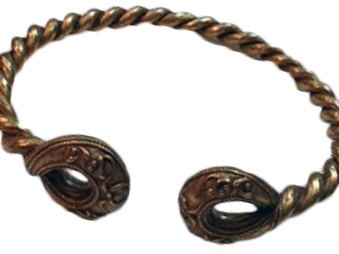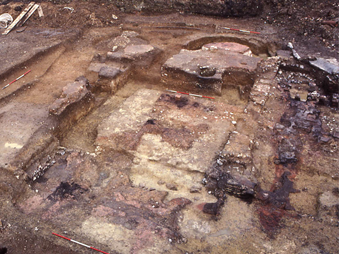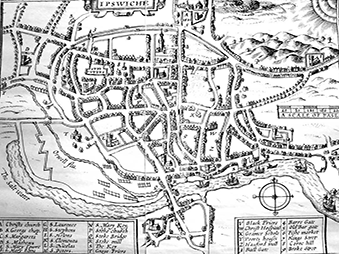Palaeolithic Period
The Palaeolithic period (500,000 BC to 10,000 BC) covers multiple glacial periods, the most recent ending c. 12 ka BP (kilo-annums Before Present) and is the longest period of human prehistory. Hominins were present in the East of England, in areas like Happisburgh and Pakefield, from 800 ka BP, before the comparatively brief Mesolithic period (10,000 BC to 4000 BC).
Ipswich is located in a valley at the edge of the Doggerland plain, which is now beneath the North Sea. The landscape was varied, with topography that might have been beneficial to Palaeolithic human and pre-modern human species. Palaeolithic material elsewhere in Britain is generally uncovered in isolated, unstratified find spots. Yet, in Ipswich, the varied geological deposits have yielded a wealth of Palaeolithic material, including some stratified sites. Mineral extraction undertaken in the region in the early 20th century also uncovered some Palaeolithic assemblages of national importance.
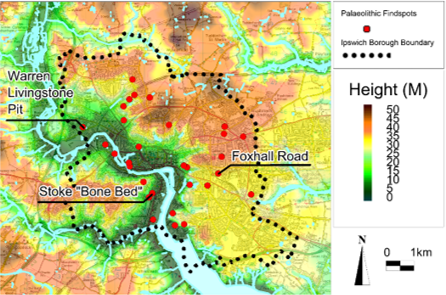

Image: All known Palaeolithic sites and findspots (left) and known Mesolithic sites (right) in the borough of Ipswich
At Foxhall Road in Ipswich, Palaeolithic deposits lie within a shallow dry valley, dated by its dry lake deposits to the Marine Isotope Stage (MIS) 11 age (c.416-434 ka BP). The deposit included several stone tool assemblages, the most important of which was a full (albeit spatially reorganised) handaxe chaîne opératoire (tool creation sequence).
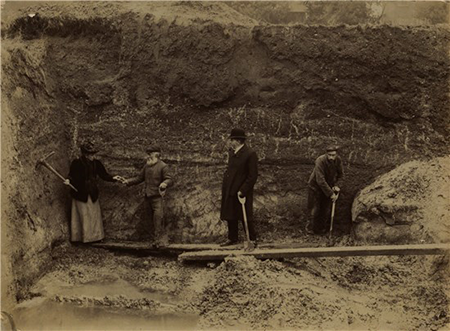
Image: Excavations at Foxhall Road 1903-1904
The “Stoke Bone Bed” of MIS 7 age, (c.200 ka BP) has yielded large quantities of faunal remains and c.20 tools including Levallois technology (IPS 163, IPS 072 and IPS 468).
In the early 20th century, the pit operated by Messrs Warren Livingstone Ltd on Bramford Road(IPS 018) recovered the most significant Devensian finds (Middle- Upper Palaeolithic, including Neandertals and Modern humans). The assemblage consisted of a large collection of handaxes of varying condition, such as the so-called 'bout coupé' (broken tip), as well as several hundred flakes, Levallois products and several Upper Palaeolithic types including Early Upper Palaeolithic leaf points, the Gravettian Font-Robert point, and a Late Glacial bruised blade, most of which are very sparsely represented in Britain.
Other sites along the Gipping/Orwell Devensian terrace yielded implements (often Middle and Upper Palaeolithic types together) and fauna (e.g. IPS 137, IPS 623, IPS 928, IPS 148, IPS 149, IPS 150), showing the richness of deposits close to the river.
Post glacial Late Upper Palaeolithic finds, such as “long blades” are represented from Ipswich (IPS 1004), and Devil’s wood pit, just outside the borough (SPT 001).
Mesolithic Period
Mesolithic occupation is sparser in Ipswich compared to Palaeolithic evidence, and less well-recorded as either unstratified or residual finds. Finds of tranchet axes have been reported from the shore of the River Orwell (IPS 001) and elsewhere (IPS 005, IPS 105). Various cores and implements (e.g. IPS 1008) have also been found throughout the borough.
